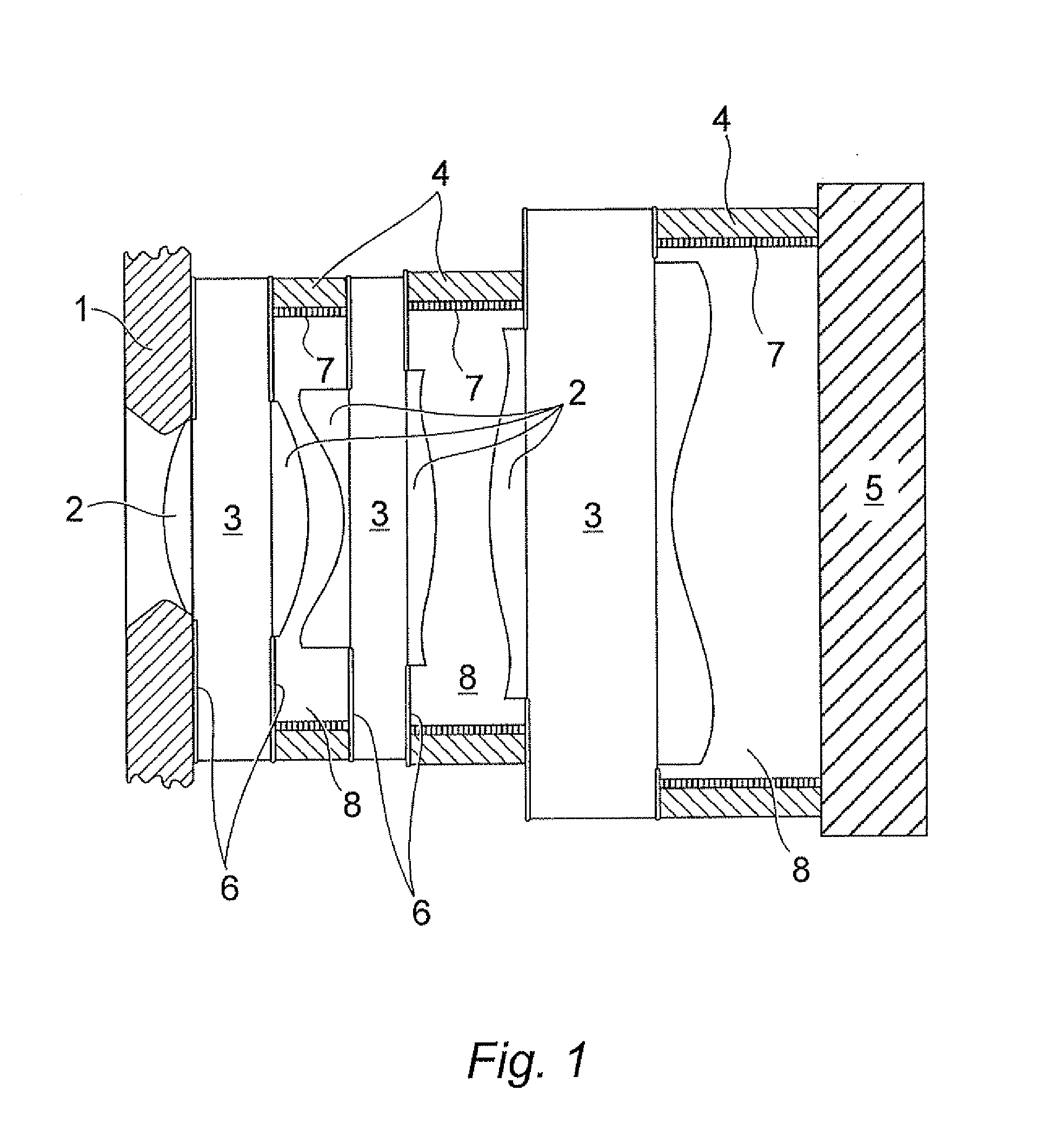Imaging assembly
a technology of assembly and assembly means, applied in the field of assembly, can solve the problems of not being able to apply anti-reflection coatings to the components of the assembly, undesirable ghost images and other stray light effects, and not being able to eliminate, so as to improve the adhesion of the spacer member, reduce stress, and improve the adhesion of the spacer means.
- Summary
- Abstract
- Description
- Claims
- Application Information
AI Technical Summary
Benefits of technology
Problems solved by technology
Method used
Image
Examples
Embodiment Construction
[0029]As illustrated in FIG. 1, a wafer scale lens may include a stacked arrangement of components, including, from the outermost component to the innermost, a cover 1, which provides baffling from the outside world and extends around the outermost lens element 2 to prevent light entering other than by the aperture stop, and a plurality of lens elements 2 implemented by over-molded features on substrate glass wafers 3. The lens elements 2 are separated by spacer members 4 which hold the lens elements 2 at a fixed separation from each and from an image sensor provided on a substrate 5. Air gaps 8 are therefore formed between the substrate wafers 3 and lenses 2, and within the spacer members 4.
[0030]FIG. 1 illustrates a large number of flat glass surfaces present around the lens elements 2 and also between the lens elements 2. These flat surfaces may leak and / or reflect stray-light back into the camera system, and as such, may normally require an angle of incidence insensitive absorpt...
PUM
 Login to View More
Login to View More Abstract
Description
Claims
Application Information
 Login to View More
Login to View More - R&D
- Intellectual Property
- Life Sciences
- Materials
- Tech Scout
- Unparalleled Data Quality
- Higher Quality Content
- 60% Fewer Hallucinations
Browse by: Latest US Patents, China's latest patents, Technical Efficacy Thesaurus, Application Domain, Technology Topic, Popular Technical Reports.
© 2025 PatSnap. All rights reserved.Legal|Privacy policy|Modern Slavery Act Transparency Statement|Sitemap|About US| Contact US: help@patsnap.com



